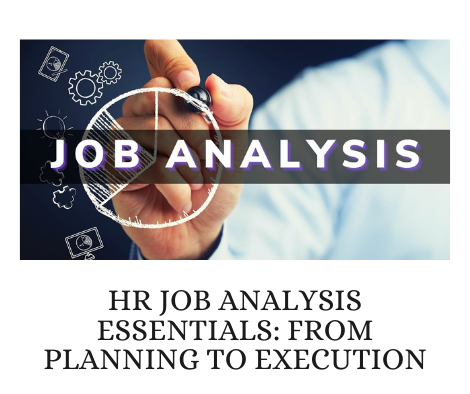1. Understanding Job Analysis
- Definition: A systematic process to determine the duties, responsibilities, and requirements of a job.
- Purpose: To create accurate job descriptions and specifications, aiding in recruitment, performance management, and compensation.
2. Planning the Job Analysis
- Identify Objectives: Determine the goals of the analysis (e.g., updating job descriptions, improving recruitment processes).
- Select Jobs for Analysis: Prioritize roles based on organizational needs, new positions, or roles with significant changes.
- Choose Methods: Decide on data collection methods (e.g., interviews, surveys, observations).
3. Data Collection Techniques
- Interviews: Conduct one-on-one discussions with employees and supervisors to gather detailed job information.
- Surveys/Questionnaires: Use structured tools to collect job-related data from a larger group.
- Observations: Observe employees performing their job tasks to understand actual work processes.
- Job Diaries/Logs: Ask employees to record their daily tasks and activities over a period.
4. Analyzing Job Data
- Compile Data: Aggregate information from different sources for a comprehensive view.
- Identify Key Components: Determine core responsibilities, required skills, and job context.
- Review & Validate: Ensure accuracy by cross-referencing with employees and supervisors.
5. Creating Job Descriptions
- Job Title: Clearly define the job role.
- Summary: Provide an overview of the job’s purpose and responsibilities.
- Key Responsibilities: List the primary duties and tasks.
- Required Qualifications: Specify necessary skills, experience, and education.
- Working Conditions: Describe the physical and environmental conditions.
6. Implementing Job Analysis Findings
- Update Job Descriptions: Revise existing descriptions or create new ones based on the analysis.
- Integrate with HR Processes: Use updated job descriptions for recruitment, performance evaluations, and compensation reviews.
- Communicate Changes: Inform employees and managers about updates and any changes in roles or expectations.
7. Reviewing and Updating Job Analysis
- Regular Reviews: Schedule periodic reviews to keep job descriptions and requirements current.
- Respond to Changes: Update job analysis in response to organizational changes, new technology, or evolving job functions.
8. Best Practices
- Involve Stakeholders: Engage employees, managers, and HR in the analysis process.
- Ensure Accuracy: Use multiple data sources and validation techniques to ensure reliability.
- Maintain Flexibility: Be prepared to adapt job analysis methods and outputs as needed.
“Next Innovation Asia in Chennai offers top-tier HR training to help you unlock your career potential. Gain valuable skills, receive certified training, and access job support. Enroll today and boost your HR career!”

